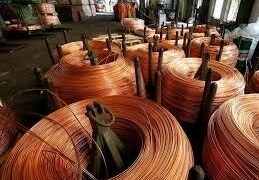Singapore — The pace of growth in China’s crude imports may slow in H2 as a cocktail of lower runs at independent refiners, potential delays in the start up of some refineries and higher inventories curb the appetite for cargoes by Asia’s largest oil consumer.
The first signs of feeble interest in cargoes were visible in the June data, which showed imports falling 4.9% to a six-month low of 4.35 million mt, or 8.39 million b/d, marking the first year-on-year drop in 2018, data from the General Administration of Customs showed.
“We think crude imports in H2 2018 will likely ease to an average of 9.01 million b/d, from 9.08 million b/d seen in H1 2018,” S&P Global Platts Analytics’ senior analyst Zhuwei Wang said.
Wang attributed the expected slowdown in crude oil import growth in H2 to a variety of factors.
While Zhejiang Petrochemical will likely delay the start of trial runs until Q1 2019, Hengli Petrochemical might be fully commissioned only in early 2019. This will curb the potential for higher crude imports in H2 2018, he said.
Even the start of the 100,000 b/d primary capacity expansion of PetroChina’s Huabei refinery in Q4, and the restart of operations at Fuhaichuang Petroleum and Petrochemical’s 4 million mt/year condensate splitter in Q3 are unlikely to support crude imports, as they would only be able to do trial runs this year.
“In addition, crude inventories piled up at both state oil companies and independent refineries in H1 2018, which will likely incentivize destocking in Q3, and cut the appetite for higher crude imports in July and August,” Wang added.
IN THE RED
Monthly crude imports by China were lower than June 2018 levels only in December 2017, which saw inflows of 7.97 million b/d, customs data showed.
The fall in June inflows was in line with expectations. S&P Global Platts trade flow tracker cFlow showed that seaborne imports in June fell 15.1% month on month to 7.4 million b/d.
Crude imports by independents have been on a downward trend, hitting a 20-month low of 5.78 million mt, or 1.41 million b/d, in June, down 19.3% year on year, S&P Global Platts data showed. Tighter tax regulations have squeezed their margins, forcing them to cut utilization rates.
Chinese independents accounted for 85% of the country’s incremental crude imports in 2017 alone.
“Considering the current predicament facing independents, we suspect that they will likely use 85% of their crude imports this year versus 94% utilization seen last year,” according to the July edition of Platts China Oil Market Forecast.
In the first half of 2017, crude imports by independent refineries had jumped 84% year on year to around 2 million b/d, as refiners had gained access to imported crude oil. However, year-on-year increase in imports from the sector shrank to 2% in the same period this year.
EXTERNAL FACTORS
Independent refiners have suffered not only from rising tax costs because of a new tax reporting system but also due to an increase in other costs following a climb in crude prices, the deprecation of the Yuan against the US dollar, as well as difficulties in getting trading loans.
China’s cumulative H1 crude imports — purchases made by both state refiners and independents — were 9.10 million b/d, or 224.82 million mt, according to customs data. This reflected a year on year growth of 5.8%, compared with a growth of 13.9% in the same period a year ago.
China’s official manufacturing PMI was 51.5 in June, 0.4 percentage points lower compared with 51.9 in May, suggesting that the economy was slowing. The production component of the index also fell to 53.6, compared with 54.1 in April.
“We believe that the ongoing crackdown on environment and safety standards will likely persist through 2018, as part of the government’s efforts to trim overcapacity in the country’s industrial sector and improve local air quality. Escalating trade tensions with the U.S. will probably constrain industrial activity to some extent which would impact oil demand,” according to Platts China Oil Market Forecast.
— Oceana Zhou, [email protected]
— Sambit Mohanty, [email protected]
— Edited by Norazlina Jumaat, [email protected]
Source: S&P Global Platts



























